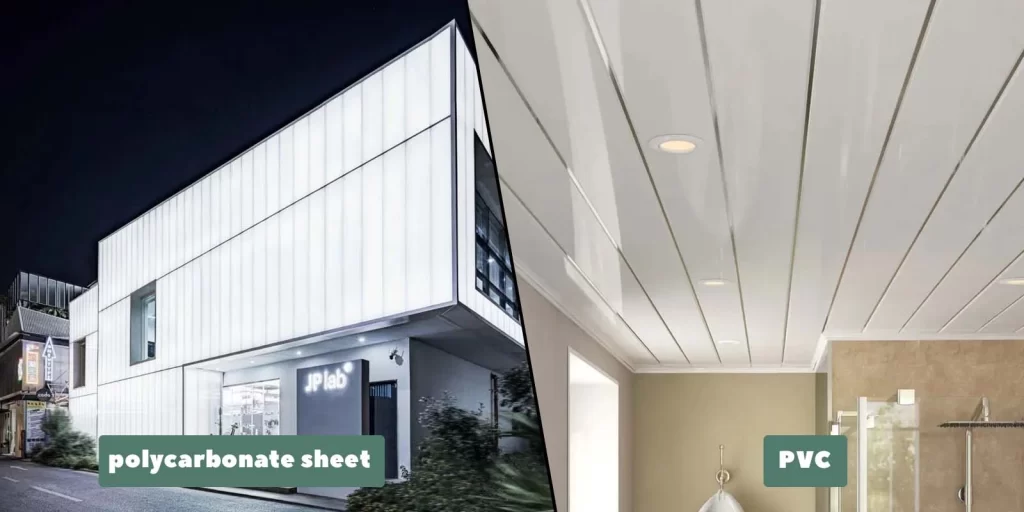
Intro
Material selection is a crucial step in starting any construction project, whether it is a greenhouse, a roof with a skylight, a road, a room with acoustic insulation, etc. This is because the use of the right material guarantees not only the successful completion of the project but also long-term durability. Two materials have gained popularity among suppliers, contractors, and wholesalers: Polycarbonate sheets and PVC plates.
In this post, we make a comparison based on six key criteria to help you know which is the best choice for your project.
Let’s get started!
1. Composition & Properties
The first point of difference between the two materials is their composition. PVC or Polyvinyl Chloride is a plastic that arises from the polymerization of vinyl chloride; it is composed of chlorine carbon and hydrogen atoms.
Due to its composition, PVC resists chemicals such as oils, salts, acids, and alcohols but not ketones, hydrocarbons, or ethers. It also has a low melting point of 212ºC.
Polycarbonate sheets result from the reaction of phosgene and bisphenol; this composition allows it to resist different chemicals, acids, oxidants, oils, hydrocarbons, etc. It has a higher melting point of 225º.
2. Impact Resistance
PVC is characterized as a rigid plastic, which affects its resistance against impacts and traction; for example, if a PVC sheet is used for a roof, it can be affected by rain or hail, resulting in cracks or fractures.
Polycarbonate sheets are high-performance synthetic materials that can withstand high impacts and resist traction because they have greater flexibility.
3. UV resistance
PVC is one of the most commonly used materials for skylights and greenhouses, as stabilized PVC is designed to withstand continuous exposure to the sun. However, it has a lifespan of 5 to 10 years, as its resistance is affected by whether conditions.
Polycarbonate can withstand extreme weather conditions, the passage of UV rays, and high-speed winds and has a useful life of 10 to 15 years.
4. Thermal & Acoustic Insulation
A PVC sheet allows light to pass through to the interior of your property, whether it is a greenhouse or another room where you want to take advantage of natural light; however, its single-layer composition affects its thermal insulation capacity, and you must invest in conditioning your interior during summer and winter. This single-layer structure also influences its ability to neutralize outside noise.
Polycarbonate sheets also allow adequate diffusion of sunlight into the interior and better neutralize exterior noise; the difference lies in their multi-layered composition in each sheet. It helps to maintain a stable temperature inside the interiors, making it an energy-efficient option that avoids higher electricity consumption in heating or air conditioning.
5. Installation
PVC sheets are light, which ensures easy handling and installation, but to increase their strength, they require additional brackets, which add more time and effort to the installation process.
Polycarbonate sheets are heavier in comparison, and their installation requires specialized tools, which takes time and requires more concentration.
6. Accessibility
PVC is a reasonably accessible material due to its salt, hydrocarbon, and chloride components.
Polycarbonate, on the other hand, is a material that requires a complex and highly specialized manufacturing process, which increases its cost. However, it is a cost-effective option in the long term due to its useful life of up to 15 years.
Which is the best?
There is no doubt that both options offer advantages to the users; the selection will depend on the budget and the objectives of your construction project. Polycarbonate is an ideal option for those who want to invest more and bet on durability, and PVC for those looking for an easy and affordable solution.
Did you like this article? Have you tried any of these materials? How was your experience?
